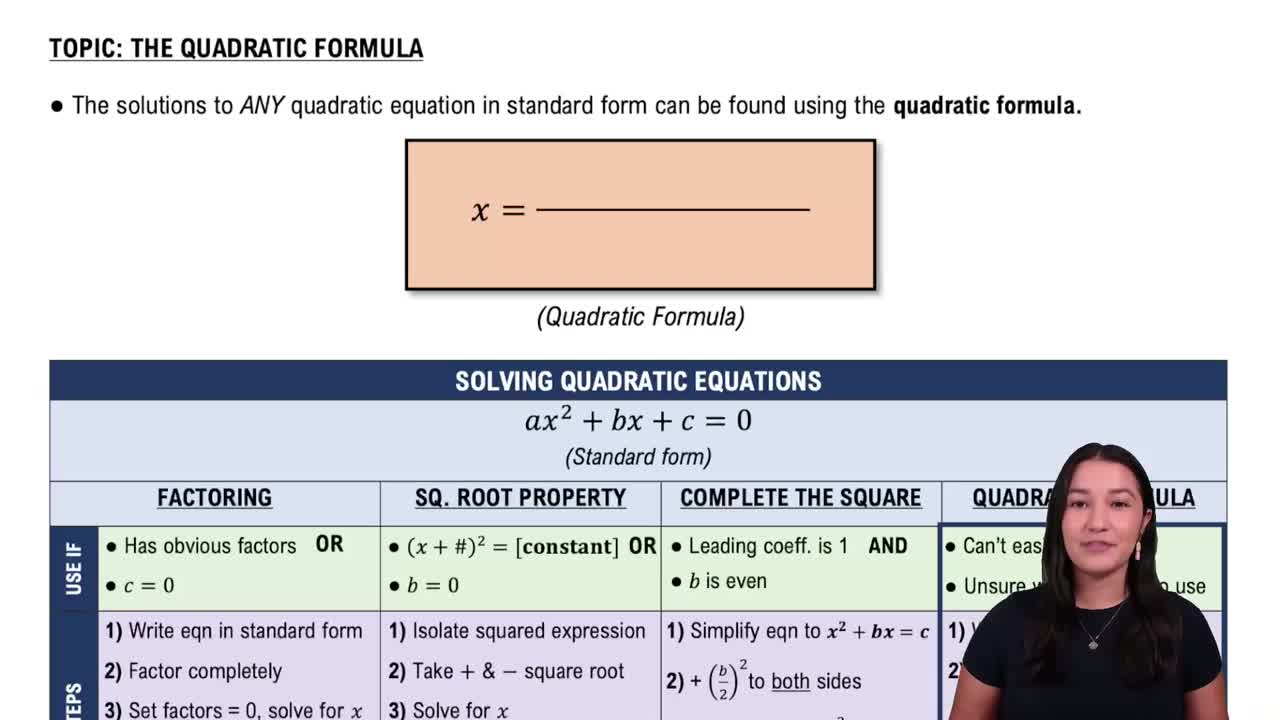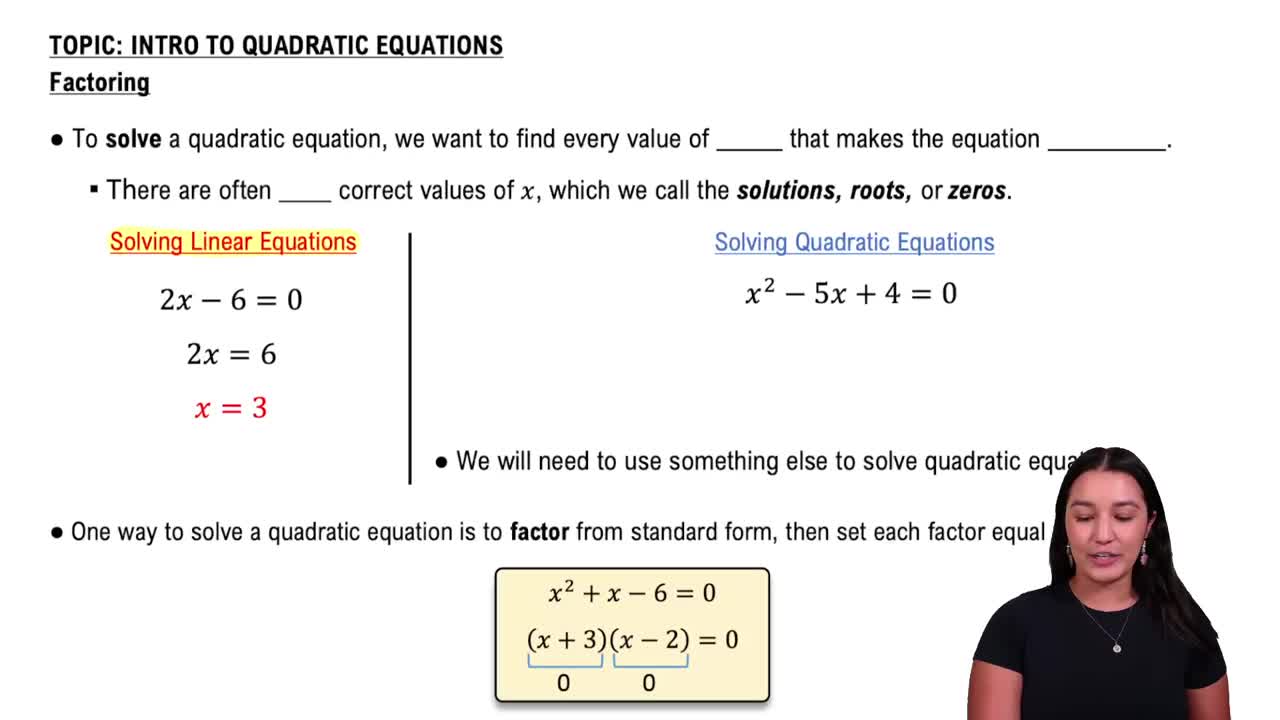Table of contents
- 0. Review of Algebra4h 16m
- 1. Equations & Inequalities3h 18m
- 2. Graphs of Equations43m
- 3. Functions2h 17m
- 4. Polynomial Functions1h 44m
- 5. Rational Functions1h 23m
- 6. Exponential & Logarithmic Functions2h 28m
- 7. Systems of Equations & Matrices4h 6m
- 8. Conic Sections2h 23m
- 9. Sequences, Series, & Induction1h 19m
- 10. Combinatorics & Probability1h 45m
1. Equations & Inequalities
Intro to Quadratic Equations
Problem 69
Textbook Question
Solve each equation in Exercises 65–74 using the quadratic formula. 3x^2 - 3x - 4 = 0
 Verified step by step guidance
Verified step by step guidance1
Identify the coefficients from the quadratic equation \(3x^2 - 3x - 4 = 0\). Here, \(a = 3\), \(b = -3\), and \(c = -4\).
Recall the quadratic formula: \(x = \frac{-b \pm \sqrt{b^2 - 4ac}}{2a}\).
Substitute the values of \(a\), \(b\), and \(c\) into the formula: \(x = \frac{-(-3) \pm \sqrt{(-3)^2 - 4 \cdot 3 \cdot (-4)}}{2 \cdot 3}\).
Simplify the expression under the square root (the discriminant): \((-3)^2 - 4 \cdot 3 \cdot (-4)\).
Calculate the two possible values for \(x\) using the plus and minus signs in the quadratic formula.
 Verified video answer for a similar problem:
Verified video answer for a similar problem:This video solution was recommended by our tutors as helpful for the problem above
Video duration:
4mPlay a video:
Was this helpful?
Key Concepts
Here are the essential concepts you must grasp in order to answer the question correctly.
Quadratic Equation
A quadratic equation is a polynomial equation of the form ax^2 + bx + c = 0, where a, b, and c are constants, and a ≠ 0. The solutions to this equation can be found using various methods, including factoring, completing the square, or applying the quadratic formula.
Recommended video:

Introduction to Quadratic Equations
Quadratic Formula
The quadratic formula is a mathematical formula used to find the roots of a quadratic equation. It is expressed as x = (-b ± √(b² - 4ac)) / (2a), where a, b, and c are the coefficients from the quadratic equation. This formula provides a systematic way to calculate the solutions, even when the equation cannot be factored easily.
Recommended video:

Solving Quadratic Equations Using The Quadratic Formula
Discriminant
The discriminant is the part of the quadratic formula under the square root, given by b² - 4ac. It determines the nature of the roots of the quadratic equation: if the discriminant is positive, there are two distinct real roots; if it is zero, there is one real root (a repeated root); and if it is negative, there are two complex roots.
Recommended video:

The Discriminant

 5:35m
5:35mWatch next
Master Introduction to Quadratic Equations with a bite sized video explanation from Callie
Start learningRelated Videos
Related Practice










